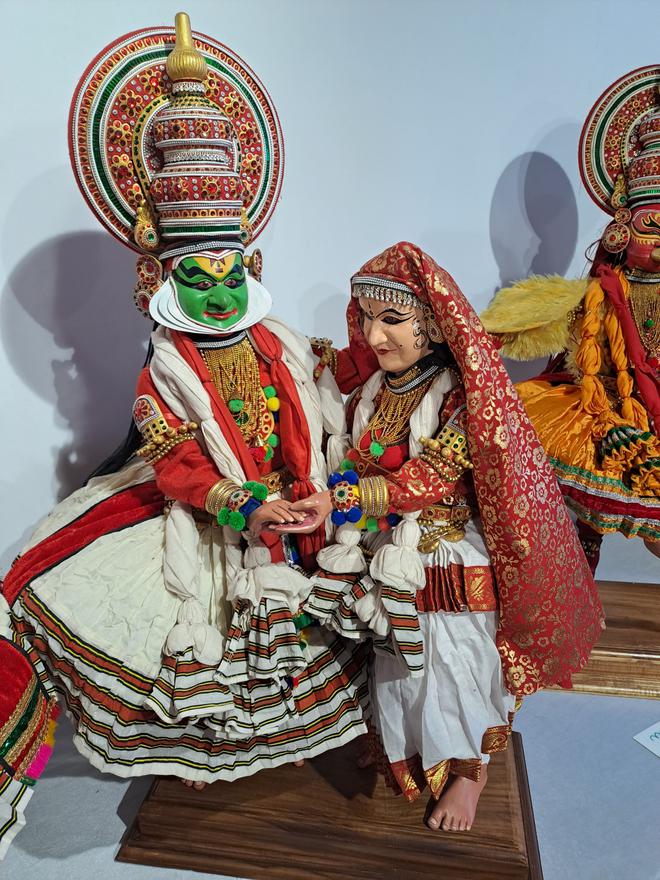Kathakali aficionados will most likely have heard of the Kothavil family of Vellinezhi in Palakkad district, practitioners of the craft of koppu - headgear and ornaments used in the State’s best-known performing art form.

Unnikrishnan K., the elder of two brothers of the Kothavil family, demonstrates the making of koppu in a small space intended to be a workshop of sorts at Kanakakkunnu Palace as part of the ongoing Keraleeyam. Behind him are life-size figures of characters from Kathakali. A small distance away, an array of Kathakali miniatures provides a glimpse of the characters in the dance drama and their distinctive appearances.
Unnikrishnan and his brother Govindankutty are the third generation of the Kothavil family, custodians of the art of koppu not only for Kathakali, but also other performing art forms such as Koodiyattom, Krishnanattam, Chakyarkoothu, Ottanthullal, and so on. Their crafts centre ‘Krishnan Achari Smaraka Koppu Nirmana Kendran’ is named after their grandfather Krishnan, who started making Kathakali headgear in the 1950s, says Unnikrishnan.
There was no uniformity to Kathakali koppu then. Kathakali make-up artistes Vazhenkada Rama Warrier, Govinda Warrier, and Krishna Warrier who were familiar with the craft of koppu and on the lookout for a wood craftsman zeroed in on Krishnan Achari. Krishan was trained in a temple pathayapura for six months during which uniformity in koppu was brought in and is followed even now, says Unnikrishnan.
Work was thin initially, but picked up and Krishnan was helped by son Ramankutty and a few disciples. After Krishnan’s death, Ramankutty followed in his father’s footsteps till his demise in 2018. Today, Ramankutty’s two sons have taken on the mantle. However, it was never thrust on them, asserts Unnikrishnan. “We chose our path, not on our father’s directions. He never insisted we learn the art of making koppu or stick to it. We want to teach it to the next generation, but know they are individuals with their own choices.”
Unnikrishnan says even during his grandfather’s time, there was no attempt to confine the art of koppu within the family. Anyone who was interested could come and learn, but in the gurukula tradition. “Like my grandfather, my father too had a number of disciples. Today, we do the same.”
Not many stick to it though. “Many craftsmen leave after spending a decade or longer with us because we can only offer them a limited income. We do not want to charge exorbitant amounts from those who come to us for koppu, even if they are located abroad.”
While koppu involves only woodwork for the headgear (kireedam) and ornaments used by the Kathakali artists, for the Kathakali miniatures that the brothers began making during the pandemic the crafts centre does the entire work such as costumes and make-up, says Unnikrishnan.
The Rural Art Hub project of the State government has been a turning point in the history of the koppu craft, he says. “There were no women involved in making koppu. Now, we have trained four women for six months. It is not easy though, and will take more time.”
The brothers’ wives are mostly involved in making miniatures, but their training in the koppu craft is under way. Unnikrishnan, however, rues the limited assistance that those keen on learning koppu receive. “It can take around six years to hone one’s skill. Stipends for trainees should be given for longer periods.”






